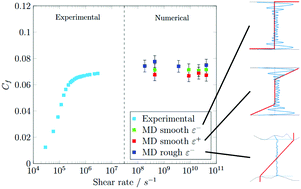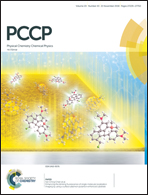Independence between friction and velocity distribution in fluids subjected to severe shearing and confinement
Abstract
Friction reduction is more than ever a key point in saving natural resources and energy, and the question of how to achieve this concerns first and foremost every lubricated system. Among the observed phenomena related to lubricated friction, limiting shear stress (LSS) appears to be one of the most challenging to explain, since its origin is still uncertain. Various scenarios have been proposed involving a transition to a glassy state under high pressure, shear banding, shear localization, or even the occurrence of slip at the solid–liquid interface, none of which have proven conclusive. This work provides new insights into the mechanisms leading to LSS and the underlying flow organization. It bridges a gap between the scenarios previously discussed in the literature to explain the mechanisms behind LSS and friction experiments, which provide macroscopic results only. We first present some general molecular dynamics (MD) simulations developed to characterize molecular fluids in their bulk state and then proceed to study their response under severe shearing and confinement. Results from simulations are compared to experimental data derived from friction tests. A further analysis of the pressure and temperature involved hints that LSS and the physical state of the lubricant are strongly interconnected concepts. Additionally, the friction results were uncorrelated to the choice of surfaces, contrary to velocity distribution.

- This article is part of the themed collection: 2018 PCCP HOT Articles


 Please wait while we load your content...
Please wait while we load your content...